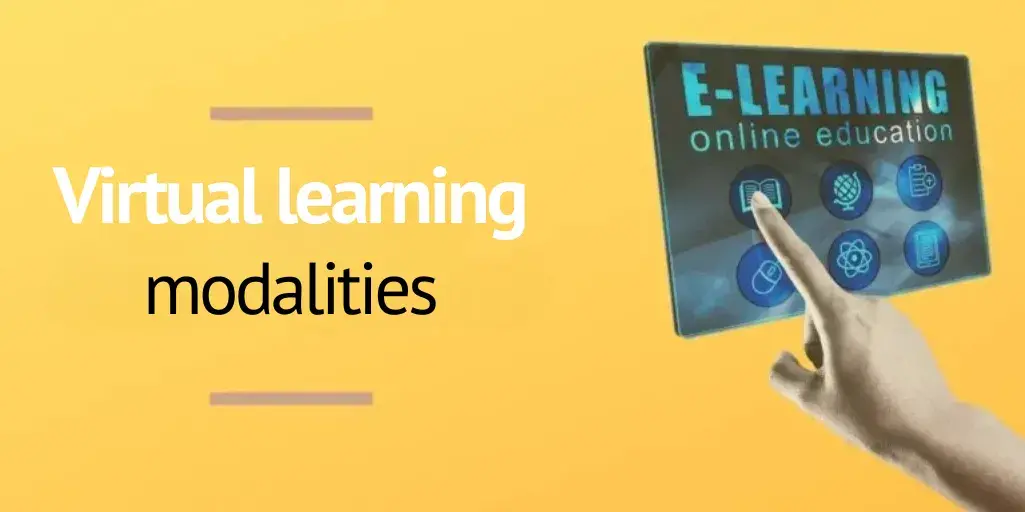The evolution of learning has been intrinsically linked to technological advances. From the invention of the printing press to the digitisation of learning content, each new technology has represented a transformation in the way people access knowledge. Today, e-learning is one of the most significant revolutions in this field, opening up limitless possibilities for academic and professional training.
E-learning platforms have made it possible to overcome geographical and time barriers, offering students the possibility to learn at their own pace and from anywhere in the world.
However, e-learning is not limited to the simple digitisation of content. With the incorporation of immersive technologies such as virtual reality (VR), interactive simulations and three-dimensional environments, virtual learning communities have evolved into increasingly sophisticated and effective experiences.
In this article we explore the main modalities of e-learning, focusing on the technologies used, provide representative examples of virtual learning communities in different sectors, difference between asynchronous and synchronous and discuss the main opportunities and challenges of distance learning. We also explore what is virtual learning. As educational institutions and companies adopt these models, there is a need to understand how they work, what their benefits are, and where further innovation is needed.
What is e-learning?

Virtual learning is a training model based on the use of digital technologies to facilitate teaching and access to knowledge without the need for a physical space shared between trainers and students.
In this way, it takes advantage of technological tools for virtual training, such as e-learning platforms, interactive classrooms and simulation environments, to offer flexible learning experiences adapted to the needs of each user.
Although often confused with traditional e-learning, e-learning has a broader scope. While the former focuses on the delivery of digital content through e-learning platforms, the latter ranges from self-guided courses to immersive environments that allow real-time interaction with digital elements and other participants.
This model seeks to recreate, and even enhance, the face-to-face learning experience through advanced technologies such as augmented reality, artificial intelligence and 3D virtual learning environments.
What are the characteristics and benefits of e-learning?
E-learning has a number of characteristics that differentiate it from traditional training models and explain its growing adoption in different sectors. Among its main attributes are flexibility, accessibility and personalisation of learning.
One of its most notable advantages is the possibility of eliminating geographical barriers. Thanks to virtual learning environments, anyone with internet access can participate in training programmes regardless of their location. This has made it possible to democratise training and to offer learning opportunities to communities that previously had difficulty accessing specialised training.
Another key aspect is the ability to adapt to different learning styles. Unlike traditional methods, which tend to follow a homogeneous approach, virtual models allow each learner to progress at their own pace and choose the resources that best suit their needs. This is possible thanks to the content tools in the virtual learning environment, which offer interactive materials, automatic assessments and personalised feedback.
In addition, e-learning promotes greater interactivity. Through simulations, virtual laboratories and collaborative spaces, learners can put what they learn into practice in controlled, risk-free environments. This approach is particularly useful in disciplines such as medicine, engineering and corporate training, where hands-on experience is essential for skills acquisition.
Finally, the implementation of emerging technologies such as artificial intelligence and augmented reality is expanding the possibilities of virtual learning, facilitating the creation of more immersive and effective experiences. As these technologies continue to develop, we are likely to see greater integration of virtual learning environments in formal education and vocational training.
Advanced e-learning modalities
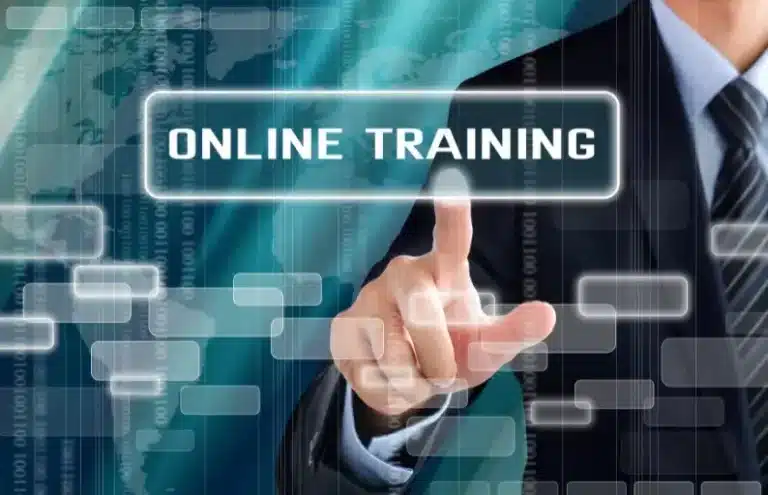
E-learning is not a uniform concept but encompasses different distance learning modalities that are adapted to the specific needs of the learners and of the educational or business institutions that implement it.
Choosing the right e-learning modality depends on several factors, such as the type of content to be delivered, the level of interactivity required, the investment in technology and the availability of resources of the participants.
Some online learning modalities focus on the total immersion of the learner in a digital environment, such as virtual reality and interactive simulations. Others seek to replicate the traditional classroom experience in a digital space, such as 3D virtual classrooms. There are also hybrid models that combine face-to-face components with virtual elements to enhance learning.
Understanding the differences between these distance learning modalities and their applications allows institutions and companies to select the best strategy for their training programmes. In the following, we will analyse in detail each of these modalities, the technological tools for virtual education and the challenges they present in their implementation.
Virtual reality (VR) in training
Virtual reality has revolutionised the way knowledge and skills are acquired in different educational and professional fields. It is an immersive learning technology that allows users to immerse themselves in a three-dimensional digital environment, where they can interact with simulated objects, scenarios and situations as if they were real.
In education, VR creates a virtual learning space that improves information retention and allows learners to develop practical skills in controlled and safe contexts.
To apply virtual reality in training, specific devices such as virtual reality goggles, haptic controllers and specialised software platforms are required. In addition, there are platforms designed exclusively for education, such as Engage, ClassVR and zSpace, which allow the creation of interactive environments for various academic levels and professional sectors.
Practical examples of application
- Medical training with surgery simulations: Medical schools and hospitals have adopted virtual reality in training to allow students to practice surgical procedures in simulated environments, reducing the margin of error in real interventions and improving the preparation of future health professionals.
- Teaching history with immersive recreations: Can you imagine walking through the streets of ancient Greece, visiting its forums and living in its domes? With e-learning, students can explore ancient civilisations, witness historical events and visit monuments from different eras without leaving the classroom, making learning more dynamic and enriching.
- Training in industrial environments with safety training: Manufacturing and construction companies use virtual reality to train their workers in safety protocols, simulating risk situations without exposing them to real dangers.
Challenges of virtual reality in education
Simulations and virtual environments
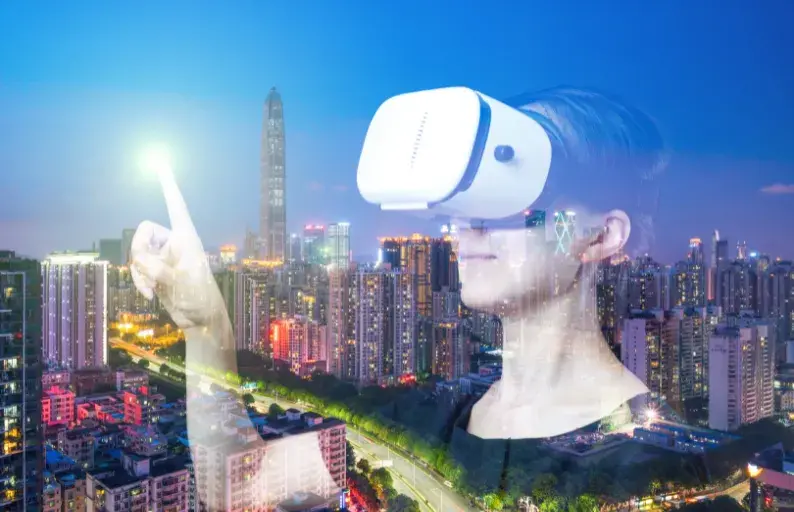
Simulations and virtual environments represent an effective alternative for learning without the need for full virtual reality.
Unlike virtual reality, where the user is fully immersed in a digital environment using specialised devices, simulations can be performed on conventional screens without requiring specific equipment.
These environments allow learners to interact with realistic situations in a safe environment, providing hands-on learning that is adaptable to different sectors.
Advanced software and graphics engines such as Unity and Unreal Engine are used to develop effective simulation experiences, enabling the creation of interactive scenarios with high visual fidelity and realistic mechanics.
In specialised sectors, tools such as SimX in the field of medical simulation and Labster in science education are very effective as they offer virtual laboratories where students can perform experiments without the need for physical materials. In addition, artificial intelligence has been progressively incorporated into these platforms to personalise the learning experience, adapting to the responses and pace of each user, which is a significant advantage.
Applications of simulations in learning
We can give some examples of virtual learning environments that make this technology more representative and understandable for teaching:
- Training in the aeronautical sector with flight simulators: Airlines and aviation academies use advanced simulations to train pilots in realistic flight conditions, allowing the practice of complex procedures without risk.
- Simulations to train leadership and conflict resolution skills: Companies and business schools use simulation platforms to recreate business scenarios and decision-making situations, helping to develop key competencies in a model virtual learning environment.
- Science experiments in online labs: Simulations allow chemistry, physics and biology students to conduct experiments safely and without the need for expensive reagents or equipment, promoting accessibility to hands-on training.
Benefits and limitations of simulations and virtual environments
One of the main benefits of simulations is the possibility of repeating experiences without risk, allowing students to learn from error without real consequences. This is especially useful in areas where error can be costly or dangerous, such as medicine or aeronautics.
Another key aspect is the reduction in cost compared to classroom training. While in a traditional environment physical materials and equipped laboratories are required, simulations allow practices to be carried out with a smaller budget, democratising access to specialised training.
However, the implementation of these systems also presents challenges. One of the main challenges is the learning curve for trainers, as many teachers are not familiar with the use of simulations and require training to integrate them effectively into their teaching methodologies.
In addition, students’ adaptation to these environments may vary according to their previous experience with digital tools, which requires adequate pedagogical support.
3D virtual classrooms

These are virtual classrooms that represent a step forward in the evolution of virtual learning environments. Unlike traditional videoconferencing platforms, which are limited to video and audio transmission, these rooms offer three-dimensional spaces in which students can interact through personalised avatars.
For the implementation of these virtual learning environments, platforms such as Virbela, ENGAGE and Spatial are used, which allow the integration of interactive elements such as digital whiteboards, collaborative work rooms and real-time simulations. In addition, these platforms are compatible with both virtual reality devices and conventional PCs, which facilitates the adoption of this technology without the need to invest in expensive specialised equipment.
Examples of the application of virtual rooms
- Language classes in immersive environments: Students can participate in conversations with native speakers in simulated scenarios, improving their fluency and comprehension in real-world situations.
- Conferences and educational events in metaverses: Universities and companies organise conferences and seminars in three-dimensional environments, allowing attendees from all over the world to participate.
- Corporate training with 3D collaborative spaces: These platforms also have an interesting application in corporate training, allowing companies to train their employees through interactive workshops and business simulations.
Challenges of 3D virtual classrooms
3D virtual classrooms provide immersive environments where learners can interact and collaborate in a more natural way and this has been a game changer for online learning compared to traditional videoconferencing platforms.
However, despite their advantages, the implementation of these spaces faces significant challenges that need to be addressed to ensure their effective adoption and accessibility.
1. Accessibility for users with less advanced equipment
One of the main obstacles to the expansion of 3D virtual classrooms is the need for dedicated hardware and a stable internet connection. Unlike conventional video calls, these platforms require more graphics processing power, which can be a problem for students and teachers using low-end devices or devices with low upgradeability.
In addition, 3D virtual classroom applications are often more demanding in terms of bandwidth and latency, making it difficult for those with limited internet connections to participate smoothly. This creates a risk of digital exclusion, leaving out learners from less favoured socio-economic backgrounds or from regions with poor technological infrastructure.
2. Training needs for trainers and learners
The success of 3D virtual classrooms depends not only on the availability of technology, but also on the ability of teachers and learners to adapt to this new learning environment. In many cases, teachers are not sufficiently trained to design effective teaching experiences in these digital spaces.
On the other hand, learners may also experience initial difficulties in navigating 3D environments, especially if they are not used to such digital interactions. The learning curve can be an obstacle that generates frustration among students and teachers and reduces the effectiveness of learning.
To address this challenge, it is crucial:
- Provide teacher training programmes focused on the use of 3D classroom tools and effective pedagogical strategies in these environments.
- Design intuitive user experiences within the platforms, reducing the complexity of navigation and facilitating immersion without requiring advanced knowledge of technology.
- Implement interactive tutorials and step-by-step guides to familiarise both students and teachers with the environment prior to its use in real classrooms.
Other forms of e-learning
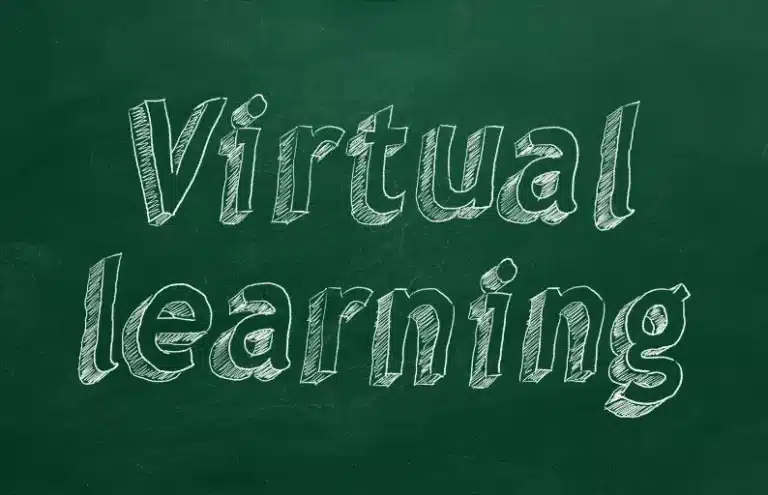
In addition to these examples of virtual learning environments that we have already discussed (virtual reality, simulations and 3D classrooms), there are other distance learning modalities that have gained relevance in recent years.
These methodologies are characterised by their focus on flexibility, accessibility and personalisation of teaching processes, allowing students to learn according to their own time and needs.
While immersive technologies seek to replicate the face-to-face experience in digital environments, these distance learning modalities prioritise the integration of innovative pedagogical strategies that optimise distance learning. These include synchronous and asynchronous learning, blended learning, flipped classroom, mobile learning, microlearning and gamification of learning.
Each of these strategies has particular advantages and is suited to different educational contexts. Their choice will depend on factors such as the nature of the content, the learner profile and the technological resources available.
In the following sections, we will explore in detail each of these modalities, their applications and the benefits of virtual learning they can bring to the teaching-learning process.
Synchronous and asynchronous learning

E-learning has diversified the ways in which learners access knowledge, giving rise to learning models that suit different paces and needs. Within these online learning modalities, synchronous and asynchronous learning have become two key approaches to online learning, each with distinct characteristics and applications. Let us know below the difference between asynchronous and synchronous.
Synchronous learning: real-time interaction
Synchronous learning is based on real-time interaction between teachers and students through digital platforms. This model replicates the structure of a face-to-face classroom, but transferred to a virtual learning space, where participants can communicate live through tools such as videoconferencing, chats or interactive whiteboards.
This type of learning is common in formal training environments, in corporate training and in courses that require the active participation of learners. Platforms such as Zoom, Microsoft Teams and Google Meet have facilitated the implementation of this model, allowing live streaming of classes, tutorials and collaborative work sessions.
One of the main advantages of synchronous learning is the possibility of resolving doubts on the spot and encouraging interaction between participants, which enriches the teaching-learning process. However, this model also implies certain limitations, such as the dependence on fixed schedules and the need for a stable internet connection to ensure uninterrupted participation.
Asynchronous learning: flexibility and autonomy
Unlike synchronous learning, asynchronous learning does not require teachers and learners to meet in real time. In this model, learners access training materials at any time and progress at their own pace, using virtual learning platforms that store resources such as videos, documents, discussion forums and interactive activities.
This modality is particularly useful in on-line training programmes where participants have different hours available, allowing them to organise their study time according to their personal or work responsibilities.
Tools such as Moodle, Blackboard and Canvas have enhanced this virtual learning modality by offering spaces where students can access structured content, participate in asynchronous discussions and submit tasks autonomously.
Although asynchronous learning provides greater flexibility, it also presents challenges such as the need for more discipline and self-management on the part of the learner. Without live sessions, some students may feel disconnected or lack the motivation to complete the course without the presence of a real-time instructor.
Blended learning (Blended learning)
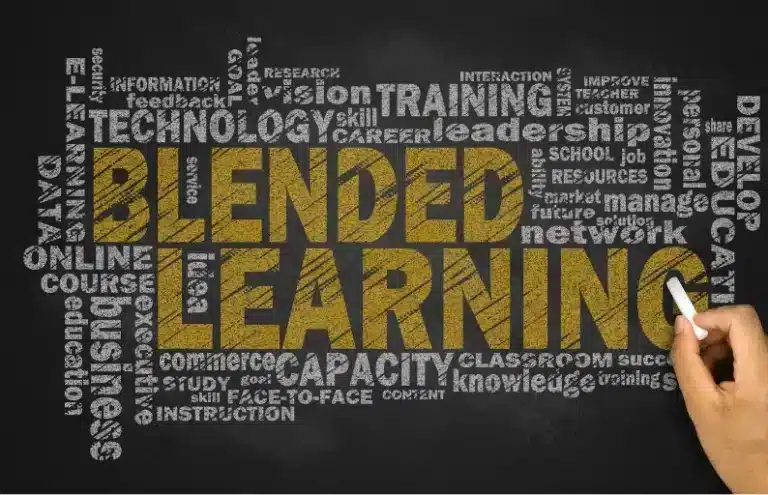
Blended learning, also known as combined or mixed learning, is a form of learning that integrates face-to-face training with elements of online learning. In doing so, it allows you to combine face-to-face interaction with the flexibility and accessibility of virtual environments, offering students a more balanced and personalized experience.
Blended learning does not follow a single model, but can be structured in different ways according to the needs of the training programme. In some cases, online training complements face-to-face classes through digital materials, discussion forums and interactive activities. In others, students can alternate between classroom sessions and virtual modules in a structured way, with a balance that varies according to the nature of the course and learning objectives.
This model is widely used in educational institutions, enterprises and vocational training programmes because it allows the advantages of both worlds to be exploited: the richness of human contact and the personalisation of digital learning.
Advantages of blended learning
Blended learning offers key benefits that make it an effective option in both formal education and, especially, corporate training:
- Flexibility without losing face-to-face interaction: Allows students to advance their studies at their own pace through virtual content, without losing the opportunity to attend face-to-face classes to reinforce knowledge or resolve doubts directly with teachers.
- Greater personalisation of learning: By combining online sessions with face-to-face meetings, trainers can adapt content to different learning styles, offering additional digital resources for those who need more support or challenge.
- Efficient use of time and resources: Face-to-face classes can focus on practical activities and discussions, while the theoretical part is addressed in the virtual learning environment. This optimises classroom time and reduces logistical costs.
- Fostering learner autonomy and responsibility: By having access to digital content at any time, learners develop self-management and organisational skills, which are essential in modern education and in the professional environment.
- Increased ability to adapt to unforeseen events: In situations where physical attendance is limited, such as health emergencies or scheduling conflicts, online learning ensures continuity of training.
Flipped Classroom

The Flipped Classroom is a teaching methodology that transforms the traditional structure of learning by moving the theoretical part out of the classroom and dedicating classroom time to practical and collaborative activities.
Instead of receiving an explanation of the subject in class and then doing exercises at home, students access the theoretical content before the face-to-face session through videos, readings or interactive resources. This allows classroom time to be used for discussions, problem solving and practical activities guided by the teacher.
This methodology is based on the idea that learning is most effective when students can explore concepts at their own pace before applying them in an interactive and collaborative environment. In a traditional classroom, students often face difficulties when they try to apply what they have learned alone; in contrast, with the flipped classroom, they have the opportunity to consolidate knowledge with the guidance of the teacher and the support of their peers.
For its implementation, technological tools such as virtual learning platforms, training videos, podcasts and discussion forums are used, which allow students to prepare the topics before the face-to-face class.
This combination of autonomous learning and group activities makes the student the protagonist of their training and promotes a greater understanding of the content.
Benefits of the Flipped Classroom
- Better use of face-to-face time: Instead of the class being devoted to theoretical exposition, teachers can focus on resolving doubts, encouraging critical thinking and guiding students in the practical application of the content. This makes the sessions more productive and participatory.
- Active and meaningful learning: Direct interaction with concepts through exercises, projects and discussions facilitates the retention of knowledge and the development of practical skills. Students are active participants in their learning rather than passive recipients of information.
- Adaptation to different learning paces: By accessing the content at home, students can review the materials as often as they need to, which benefits those who require more time to process the information. In addition, more advanced learners can go deeper into the topics without being limited by the pace of the group.
- Increased autonomy and responsibility: The flipped classroom encourages self-management of learning, as students must organise themselves to study the materials beforehand and arrive prepared for class. This develops essential skills for higher education and the world of work.
- Effective use of digital tools: Technology makes it possible to diversify learning resources, from explanatory videos to interactive simulations. This makes the process more attractive and accessible, especially for new generations accustomed to digital formats.
The Flipped Classroom is a strategy increasingly adopted in schools, universities and corporate training programmes due to its ability to improve understanding of concepts and strengthen student participation. Its success lies in the proper planning of pre-materials and the design of interactive lessons that encourage active learning.
Microlearning
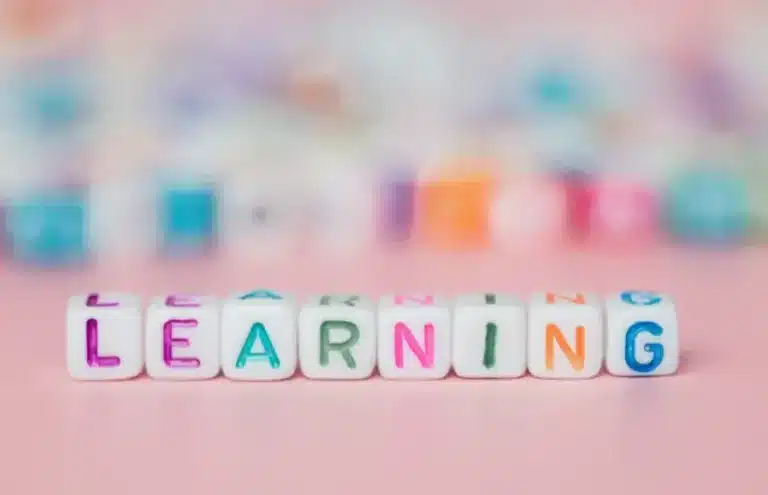
Microlearning is a training methodology based on the distribution of content in small doses, designed to be consumed quickly and in a focused manner.
Unlike traditional courses, which may require long, structured sessions, microlearning breaks learning into short modules, making it easier to integrate into the learner’s daily routine.
This approach is particularly popular in the corporate environment and for self-study, as it allows users to acquire specific knowledge without having to invest large periods of time. Common formats include short videos, infographics, interactive quizzes, podcasts and simulations, all designed to be accessible at any time and from any device.
Microlearning is not only effective for acquiring new skills but also for reinforcing previous knowledge, offering a quick and effective way to consolidate information. Thanks to its agile design, this methodology is perfectly adapted to the digital age, where information overload and lack of time make traditional training methods less effective for certain types of learning or people.
Benefits of microlearning
- Increased knowledge retention: By focusing on key concepts and presenting them briefly and concisely, microlearning facilitates the assimilation of information without generating cognitive saturation.
- Adaptability to reduced schedules: This modality is ideal for students and professionals with little time available, as the modules can be completed in minutes without compromising the quality of learning.
- Flexibility and accessibility: The contents can be consumed at any time and from any device, which means that it is possible to take advantage of downtime such as commuting or work breaks for learning.
- On-demand learning: Users can select what content they need at a specific time, without having to follow a rigid training programme.
- Increased motivation and engagement: By being dynamic and easy to consume, microlearning maintains user interest and reduces the drop-out rate in training programmes.
Microlearning has become a key tool in digital education and corporate training, as it allows knowledge to be continuously updated without requiring long study sessions. Its integration with other methodologies such as blended learning further reinforces its impact on modern training.
Trends and the future of e-learning

Technological advances, the digitisation of education and the growing demand for flexible and accessible learning have driven e-learning, which has undergone an unprecedented transformation in recent years.
As digital tools continue to evolve, new opportunities are emerging to enhance the learning experience, broaden access to knowledge and personalise the teaching-learning process more efficiently.
The future of e-learning will be marked by the integration of emerging technologies such as augmented and virtual reality, artificial intelligence, the educational metaverse and real-time data analytics. These innovations promise to generate more immersive and interactive learning experiences tailored to the needs of each learner, optimising performance and knowledge retention.
In addition, improved connectivity and the development of more accessible technological infrastructures will facilitate the expansion of these educational models, allowing more people, regardless of their location or socio-economic level, to benefit from digital learning.
Companies and educational institutions will also play a key role in this evolution, incorporating hybrid models and teaching strategies based on personalisation and autonomous learning.
Expansion of the formative metaverse
The learning metaverse represents one of the most disruptive trends in virtual learning, fusing virtual reality (VR), augmented reality (AR) and artificial intelligence (AI) to create immersive and highly interactive learning spaces.
In this digital environment, one of the trends in distance learning is students can move within three-dimensional virtual campuses, attend classes with personalised avatars, collaborate on projects in real time and access educational resources that simulate real-world scenarios.
Unlike conventional e-learning platforms, which typically rely on video lectures and pre-recorded content, the educational metaverse seeks to replicate and even enhance the physical classroom experience.
The sense of presence and interaction in a 3D environment allows students to become more actively involved in the learning process, strengthening knowledge retention and the development of practical skills in simulated environments.
One of the most promising developments within the educational metaverse is the emergence of digital campuses and fully virtual universities, which allow students to pursue careers and training programmes without the need to physically attend an institution. These universities offer:
- 3D virtual classrooms, where students can interact with teachers and classmates through customisable avatars.
- Simulation labs, where scientific experiments, technical tests and hands-on training can be conducted in a safe and controlled environment.
- Virtual libraries and study spaces, providing access to books, research and learning tools without the constraints of physical resources.
- Academic events and conferences in the metaverse, where experts and students can share knowledge and experiences in digital auditoriums.
Integration with blockchain technologies for certification of studies
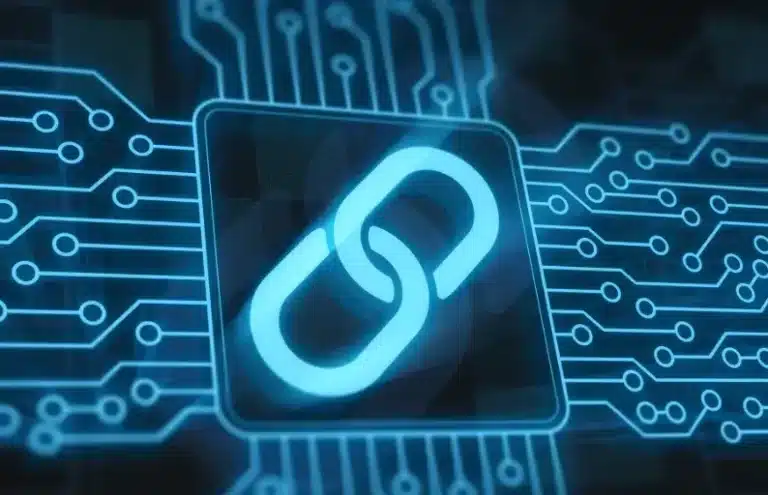
Another key development within the learning metaverse is the integration of blockchain for the certification of studies. This technology makes it possible to register, validate and share academic credentials in a secure and decentralised way, reducing the risk of fraud and facilitating access to job and academic opportunities.
Blockchain-based digital certificates offer multiple benefits, such as:
- Immutability and security: Once issued, degrees and diplomas cannot be altered or falsified, guaranteeing their authenticity.
- Global access and simplified processes: Students can share their academic records with employers or institutions without the need for bureaucratic red tape.
- International recognition: Thanks to the decentralisation of certification, diplomas can be validated by universities and companies anywhere in the world.
The use of blockchain in training not only improves transparency and trust in certification systems, but also enables the creation of micro-credentials that recognise specific skills acquired during training. This is especially useful in continuous learning environments, where professionals can accumulate verified certifications to demonstrate their evolution in different areas of knowledge.
The rise of immersive learning
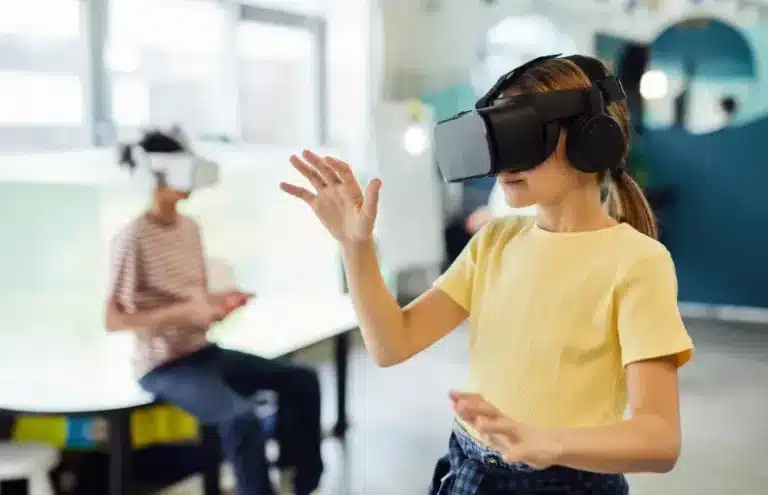
Immersive learning is experiencing exponential growth as technology advances and becomes more accessible to schools, businesses and professionals. This approach to teaching is based on the use of virtual reality (VR), augmented reality (AR) and interactive 3D environments, which allow learners to immerse themselves in immersive and participatory learning experiences.
Unlike traditional methods, which rely on textbooks and lectures, immersive learning facilitates the understanding of complex concepts through direct experimentation and interaction with three-dimensional models.
Thanks to these advances, students can explore the human body in 3D, practice safe laboratory simulations or travel back in time to study historical events from a unique perspective.
One of the main obstacles to the mass adoption of immersive learning has been the cost of the hardware required for virtual and augmented reality experiences. However, in recent years, the prices of VR and AR devices have dropped considerably, allowing more institutions to integrate these technologies into their learning programmes.
Development of training materials designed exclusively for virtual environments
As immersive learning gains popularity, there has been an increase in the creation of learning materials designed specifically for virtual environments, optimised to take full advantage of VR and AR capabilities. These materials go beyond the simple digitisation of books or videos, as they seek to generate experiences that are only possible in an interactive 3D environment.
The creation of immersive educational content is revolutionising the way learning programmes are designed. Instead of adapting traditional materials to a digital format, learning experiences are being created specifically for virtual environments, maximising the effectiveness and impact of learning.
The evolution of learning platforms
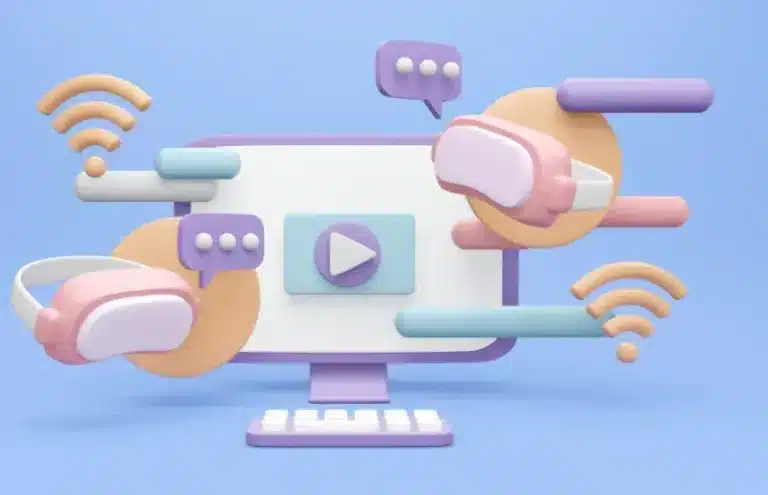
Virtual learning platforms have evolved significantly in recent years from simple repositories of digital content to advanced systems that integrate emerging technologies such as virtual reality (VR), artificial intelligence (AI) and Big Data. This transformation has enabled the creation of more dynamic, adaptive and efficient learning environments, optimising both the learner experience and the work of teachers and trainers.
As digital education continues to expand, new platforms not only facilitate access to knowledge but also offer tools to analyse student performance, personalise learning content and improve knowledge retention through innovative methodologies.
Growth of tools combining VR, AI and Big Data for learning analytics
The future of e-learning lies in the combination of generative artificial intelligence, virtual reality and Big Data analytics. The convergence of these technologies provides more immersive learning experiences tailored to the needs of each user, which is changing training.
- Virtual Reality (VR) and immersive environments: Learning platforms are integrating virtual reality to create interactive 3D experiences, allowing learners to participate in lab simulations, historical tours and hands-on exercises without the need for a physical space.
- Artificial Intelligence (AI) for automated tutoring: AI systems can act as virtual assistants or intelligent tutors, offering real-time explanations, answering questions and providing materials tailored to the learner's progress. Artificial intelligence can also be used to create chatbots for e-learning training.
- Big Data and predictive analytics: Thanks to the analysis of large volumes of data, platforms can identify learning patterns, detect early difficulties and propose personalised solutions for each learner.
Advanced personalisation through the collection of user behavioural data
- Adaptation of the learning pace: Artificial intelligence analyses the student's progress and adjusts the difficulty of the content or the amount of information presented according to their level of understanding.
- Recommendation of personalised materials: Based on user interactions, the platform suggests additional resources such as readings, videos or interactive activities that reinforce key concepts.
- Real-time feedback: AI systems can provide automatic corrections, suggestions for improvement and alerts when a learner needs to reinforce certain topics.
- Performance-based gamification: Through analysis of user behaviour, platforms can implement personalised game mechanics, such as rewards, badges and challenges, to increase motivation.
E-learning as a driver of training transformation
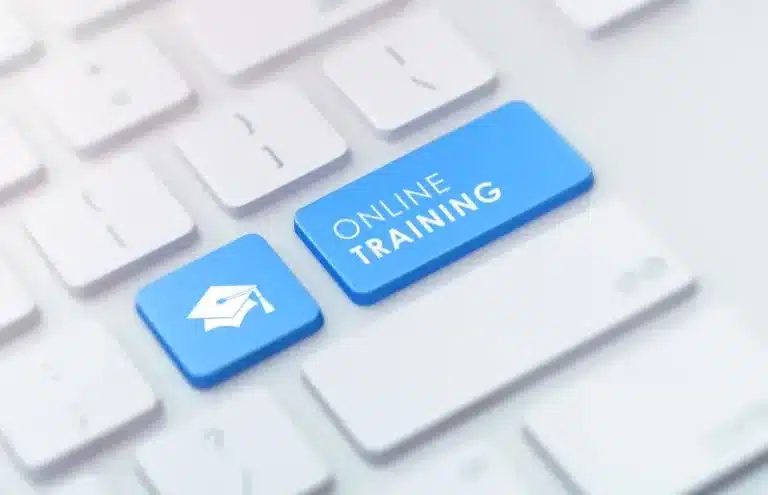
Virtual learning is no longer just an alternative to traditional training, but has become a fundamental pillar of the educational and professional future. The integration of technological tools for virtual training such as virtual reality, artificial intelligence and data analysis is redefining the way we acquire knowledge, promoting more dynamic, interactive experiences adapted to the individual needs of each student.
In academia, these innovations are overcoming the barriers of time and space, providing access to high-quality virtual learning environment content tools regardless of the learner’s location. At the corporate level, companies use e-learning to optimise the training of their employees, ensuring continuous and personalised training that meets the changing challenges of the labour market.
However, in order to exploit the full potential of these methodologies, it is imperative that educators, learners and organisations adapt to this transformation. Teachers must develop new digital and pedagogical skills to effectively integrate these tools into their teaching strategies. Students, on the other hand, should encourage self-management of learning, taking advantage of the flexibility and personalisation offered by these platforms. Finally, companies and educational institutions must invest in innovative training models which allow knowledge to be constantly updated.
One of the greatest benefits of virtual learning is its ability to democratize access to education by removing economic, geographical and structural constraints that have traditionally hampered access to quality education. As these technologies become more accessible and adaptable, we will be able to move towards a more equitable education model where anyone, regardless of context, can develop their potential and acquire the skills needed for the future.
Virtual learning is not just a fad but an irreversible transformation of the education system and the world of work. Its evolution will continue to be marked by technological innovation, the personalization of knowledge and the integration of immersive experiences. Adapting to this change is already a necessity for those seeking to remain competitive in an ever-changing environment.
